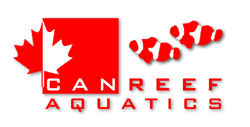
 |
|
#11
|
|||||
|
|||||
|
Yes and no. Yes it's a flow argument and No you don't need a closed loop to hide your refugium, skimmer etc. As I mentioned in my earlier post, the closed loop is a separate system from your sump and return pump. The sump and/or refugium is where you can place your skimmer, heaters etc. It has its own return pump but it is in fact a kind of 'open' loop because of the overflow typically used to drain the display tank water to the sump and refugium. The 'closed' loop for flow is 'closed'. Bulkheads for intake, pump inline, more bulkheads to discharge the water back into the display. Totally separate and independent of the sump/refuge circuit. This is one of the potential disadvantages of closed loops, all the extra holes required in your tank.
__________________
Mike 77g sumpless SW DIY 10 watt multi-chip LED build |
|
#12
|
||||
|
||||
|
OK... I understand what you are saying now. However, can you not just use the lines from your sump pump to create your flow if you Tee the lines and put the returns in multiple dispersed locations??
|
|
#13
|
|||||
|
|||||
|
I don't currently run a sump so I'm just going by what I've read, but typically the flow from your return pump and sump is insufficient for most marine set ups. It's more for filtration and extra water volume than for flow. Some folks run water faster than others through their sumps, but for hard corals, supplemental flow is almost always required, either via powerheads or closed loops.
Even though I don't have sps corals, I run two VorTech MP40Ws in my sumpless set up. The flow from these two powerheads does a great job of keeping detritus etc from settling anywhere in the system.
__________________
Mike 77g sumpless SW DIY 10 watt multi-chip LED build |
|
#14
|
||||
|
||||
|
ok, thanks mike, could you not just go with a really high gph pump for your return?
|
|
#15
|
|||||
|
|||||
|
You could, provided your overflow can handle what the return pump delivers. If not, you'll have yourself a flood, followed by an empty overflow, followed by a starved return pump, followed by a seized return pump or tripped circuit breaker, followed by.... you get the idea.
Most overflows are not able to deliver the drain capability for an oversized return pump and too much flow through the sump causes all kinds of other issues. Closed loop is not as limited since no air is involved, it's kind of like a full siphon on steroids.
__________________
Mike 77g sumpless SW DIY 10 watt multi-chip LED build |
|
#16
|
||||
|
||||
|
Ok, so basically if you wanted to go with high gph pump, you`d need an overflow with huge balls, which isn`t really practical for space or asthetics...
|
|
#17
|
|||||
|
|||||
|
You got it..
__________________
Mike 77g sumpless SW DIY 10 watt multi-chip LED build |
|
#18
|
||||
|
||||
|
OK, i got this figured out. thanks again mike. Im planning a huge upgrade in the new year (sump, refug, skimmer, powerheads, larger tank) and am reading like crazy; I want to have all my angles and bases covered. Cut once, measure twice, right? thanks for the info.
|
|
#19
|
|||||
|
|||||
|
Not a problem, happy to be of assistance. An upgrade with basement sump is in my future as well. I already have the return pump, a lightly used Panworld NH-150PS. My current 77 gal sumpless will become the refugium or frag tank and a used 65 I have laying around will be the sump until I empty the 77.
Sounds like you're off to a great start in the research department. Best of luck.
__________________
Mike 77g sumpless SW DIY 10 watt multi-chip LED build |